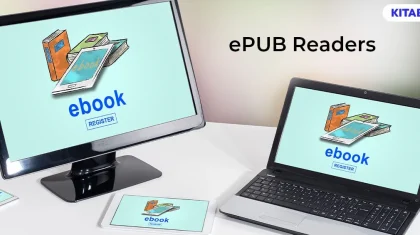
K-12 Education in the Post-COVID Era
Summarize this blog with your favorite AI:
We will never look at disaster movies the same again. The last few weeks have suddenly made them seem just a little bit less far-fetched – the mask and glove-clad grocery shopping, the slightly dystopian feeling of driving on near-empty highways. Lives have been upended, and the future seems uncertain for millions.
How the next few months will play out across the world is quite uncertain. Institutions need to start thinking about the impact of this pandemic and the resulting disruption on K-12 education globally.
The Impact on K-12
Educators across the country are reacting in real-time to the new situation. Let’s talk about what is a near-certainty – or, what we know.
What we Know
The consensus opinion seems to be that a vaccine is, at best, at least 18 months out. So, while schools may start in the fall as scheduled under new guidelines, further quarantine periods can no longer be ruled out. And there is no excuse for being unprepared again.
This has several implications:
- Schools and teachers can no longer rely on a print-only teaching strategy. Programs will have to adopt a blended approach, with some built-in digital redundancy.
- While this past month was the ‘minimum viable product’ implementation of remote learning/teaching, schools will be expected to have a far more sophisticated approach the next time around.
- Online learning must ultimately minimize loss of teaching and learning efficiency and effectiveness.
- Much more will be expected of ed-tech tools and platforms.
- Teachers across countries have taken a crash course in tech over the past several weeks. They are likely to emerge with new-found knowledge of what works and what they like. They will have a compelling point of view on what an excellent tech tool or platform needs to offer.
- Physical isolation will increase the need for more social connections on these tools. There is a reason Zoom’s gallery view has emerged as such a powerful and must-have feature.
- Not every class can be effectively taught online or remotely. Lab-based learning, or music, for instance, is that much harder to do remotely.
Related Read:Learning in the Times of COVID-19 – How to Develop Your Online Learning Material
Things to Think About
Educators across the country are already worrying about learning loss for students, with the entire second semester being disrupted. Over the coming months, each institution and teacher will come up with strategies on how to start the next academic year, and how and when to catch up.
However, that assumes things go back to normal in Fall 2020. It is increasingly looking more likely, instead, that there will continue to be disruption over the next 6-12 months.
Depending on how the infection rate reacts to the country and businesses opening up, there may be more shelter-in-place orders. In this scenario, it may be that the entire curricula need to be reworked across grades.
While better-funded schools have been able to continue formal online learning during this hiatus, for most public schools, things have been different. Even if every student has a device, not everyone has a reliable connection. Providing individual hotspots and creating “mobile hotspots” out of buses, while admirable, has been less than fully adequate. For 20-21, school districts will have to come up with a strategy that ensures every student gets access to a reliable connection in addition to having her own personal device.
There could also be experimentation with school days and weeks. Maybe a 3 or 4-day in-person school week or a shorter school day. Some classes will get higher priority, such as the lower elementary grade, lab-based subjects. Some students, especially without an acceptable setup at home, may also be able to learn at school with only a few of their classmates.
Planning for the Future
Due to all the varying reasons that might cause an interference in the learning journey of a student- be it the institution’s financial woes, reliable internet connection, lack of appropriate tools and devices, there’s a sense of urgency to normalize the current situation and ensure continuity in education as soon as possible. The decision-makers of institutions need to come up with an immediate solution to mitigate these problems.
Surprisingly, a lot of education service providers have started working furiously amid this global chaos to support the learning institutions. Some of them are providing free online courses, while some are offering courses at heavily discounted rates. And then we have online learning platforms that are equipped with all the features required for students to fulfill their learning needs. Complete with collaboration tools, online assessments, data analytics, offline reading facility and interactive learning content, these platforms are what students require today.
Educators can also opt for a blended learning model empowered by technology. Since learners and educators are heavily relying upon remote learning, these technology-enabled solutions can improve the overall learning experience of students and the efficacy of the education system.
The remote learning trend is expected to continue even after the pandemic subsides. It will probably take months for schools and universities to get back to what was once considered normal- with students and teachers coming to the classrooms and participating in knowledge sharing sessions. Therefore, it is best to adopt the solution that we have right now in front of us and adapt it for the future while we explore other viable alternatives. We don’t know what the future holds, but we can at the very least be prepared for it.
Suggested Reads:
Discover how a mobile-first training platform can help your organization.
KITABOO is a cloud-based platform to create, deliver & track mobile-first interactive training content.


